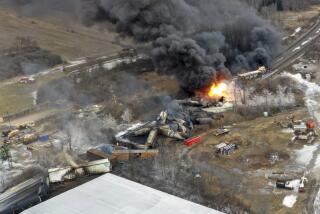Quiet space
- Share via
Any student of rocketry, ballistics or barroom darts can appreciate the Navy’s feat this week in hitting a minibus-sized object 153 miles above the Pacific Ocean. But questions about the timing of and the need for the Pentagon’s destruction of a defective spy satellite will not go away any time soon.
The official story seems credible. Titanium parts, such as the tank full of dangerous hydrazine fuel on satellite USA 193, do survive reentry, and the military had reason to be scrupulous about the vanishingly small risk of an impact in a populated area. The satellite was destroyed low enough in its orbit that most of the debris will burn up within a few months -- a sharp contrast with China’s satellite kill in January 2007, which left a wide debris field in higher orbit. Nevertheless, it’s not clear that the operation was absolutely necessary, and it is not out of place to wonder whether the Chinese test partly encouraged this unusual step.
The prospect of a space arms race is unappealing, and there’s a reason anti-satellite missile testing fell into disuse. The more than 50 countries that maintain satellites are increasingly mindful of the problem of clutter in the precious resource of near-Earth space. We hope we’ve seen the last of shooting up the thermosphere, even for good reasons.


